Measuring the tail Methods for poly(A) tail profiling Brouze 2023 WIREs RNA Wiley
Measuring the tail Methods for poly(A) tail profiling Brouze 2023 WIREs RNA Wiley

In addition to 5' Cap and 3' Poly-A Tail addition, introns must be precisely removed and exons joined to generate a functional mRNA. Nucleotides upstream (towards the 5'cap) of the translation START codon are part of the 5' untranslated region (5' UTR). Nucleotides downstream (towards 3'end) of the STOP codon form the 3' UTR.
(PDF) Addition of poly(A) and poly(A)rich tails during RNA degradation in the cytoplasm of

The Poly A Tail. Post-transcriptional RNA processing at the opposite end of the transcript comes in the form of a string of adenine bases attached to the end of the synthesized RNA chain. This string of adenine is called the "poly A tail". The addition of the adenines is catalyzed by the enzyme poly (A) polymerase, which recognizes the sequence.
PPT CHAPTER 6 HOW CELLS READ THE GENOME FROM DNA TO PROTEIN PowerPoint Presentation ID1392005

Poly(A) tails are non-templated additions of adenosines at the 3′ ends of most eukaryotic mRNAs. In the nucleus, these RNAs are co-transcriptionally cleaved at a poly(A) site and then polyadenylated before being exported to the cytoplasm. In the cytoplasm, poly(A) tails play pivotal roles in the translation and stability of the mRNA. One challenge in studying poly(A) tails is that they are.
PPT PRINCIPLES OF BIOCHEMISTRY PowerPoint Presentation, free download ID6145376
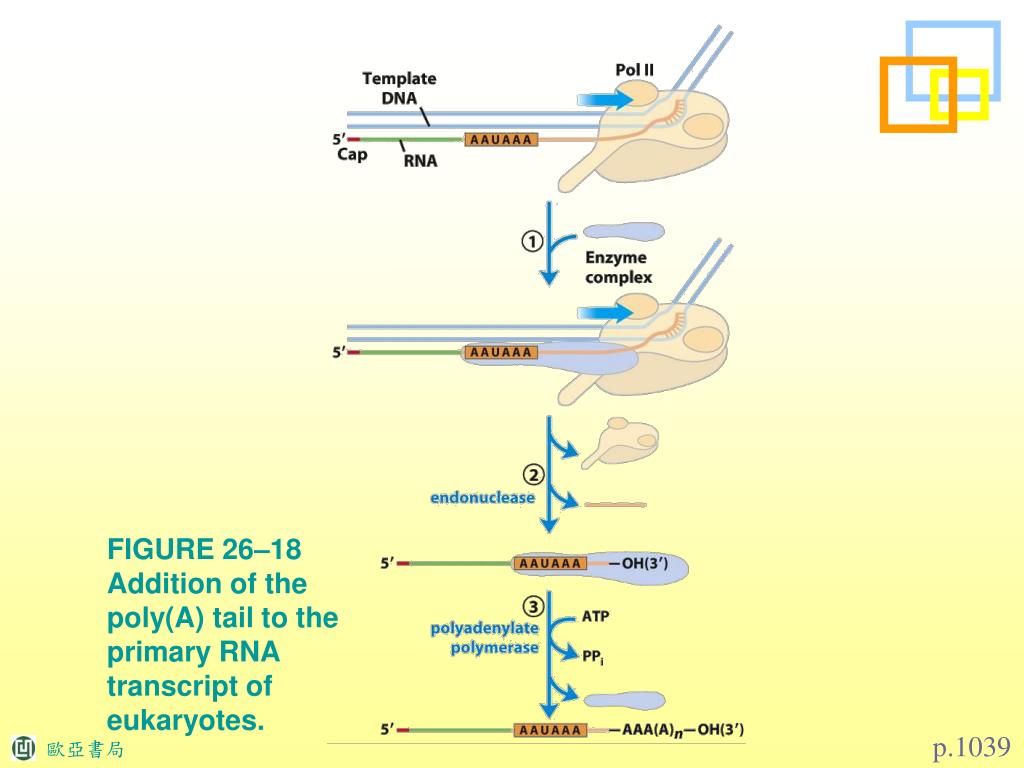
Multiple endonucleolytic cleavage events of rRNA or mRNA before transient tail addition, as in other poly(A)-mediated RNA decay pathways, could provide bare 5′ (and 3′) ends, thereby bypassing the need to decap the molecule . More studies are needed to characterize any differences between poly(A)-mediated rRNA and mRNA decay.
Tales of Detailed Poly(A) Tails Trends in Cell Biology

Polyadenylation is the addition of a poly (A) tail to an RNA transcript, typically a messenger RNA (mRNA). The poly (A) tail consists of multiple adenosine monophosphates; in other words, it is a stretch of RNA that has only adenine bases. In eukaryotes, polyadenylation is part of the process that produces mature mRNA for translation.
Mind your caps and Poly A tails NEB

The poly(A) tail is necessary for the transport of mRNA molecules from the nucleus to the cytoplasm (Fuke & Ohno, 2008) and enhances mRNA stability, as deadenylation is the first step in RNA decay pathways (Wang & Kiledjian, 2001) and translatability through an interaction between poly(A)-binding protein 1 (PABPC) to the 5′ cap-binding.
PPT Transcription & Translation PowerPoint Presentation, free download ID416377
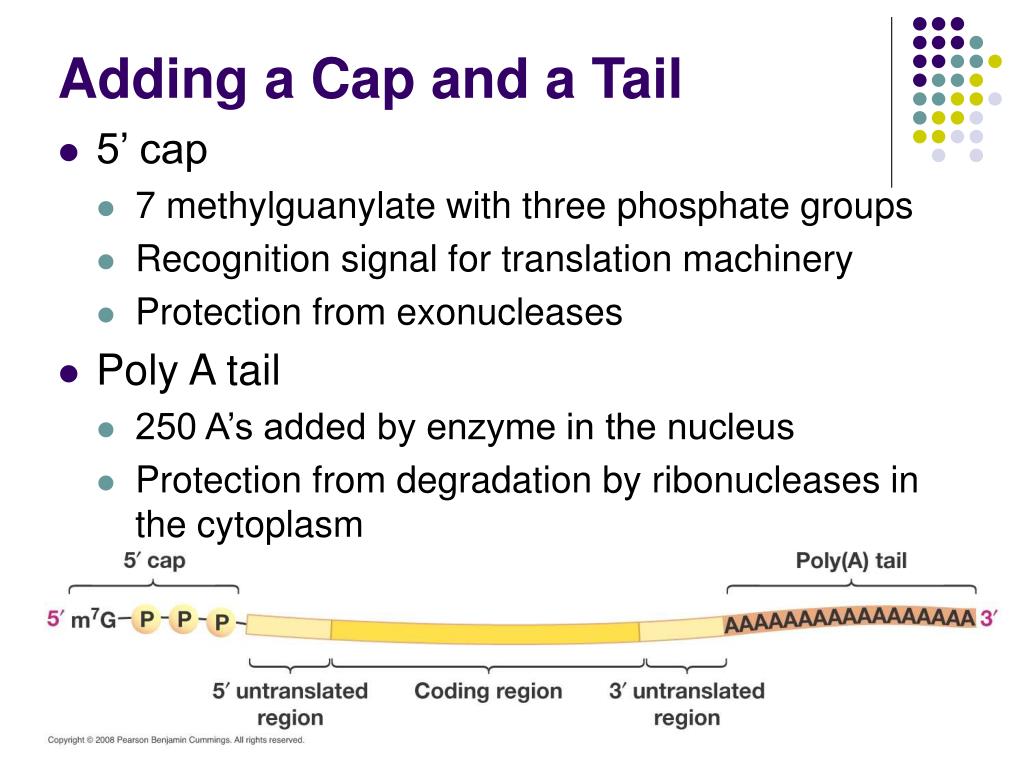
The length of the poly(A) tail has been found to be closely related to almost every stage in the mRNA life cycle, including. cleavage at a specific site (the scissors, indicating the site of cleavage by CPSF) and addition of a poly(A) tail at the same site. Then, the mature mRNAs with long poly(A) tails will be exported to the cytoplasm and.
Tales of Detailed Poly(A) Tails Trends in Cell Biology

In addition to 5' Cap and 3' Poly-A Tail addition, introns must be precisely removed and exons joined to generate a functional mRNA. Nucleotides upstream (towards the 5'cap) of the translation START codon are part of the 5' untranslated region (5' UTR). Nucleotides downstream (towards 3'end) of the STOP codon form the 3' UTR.
Posttranscriptional processing
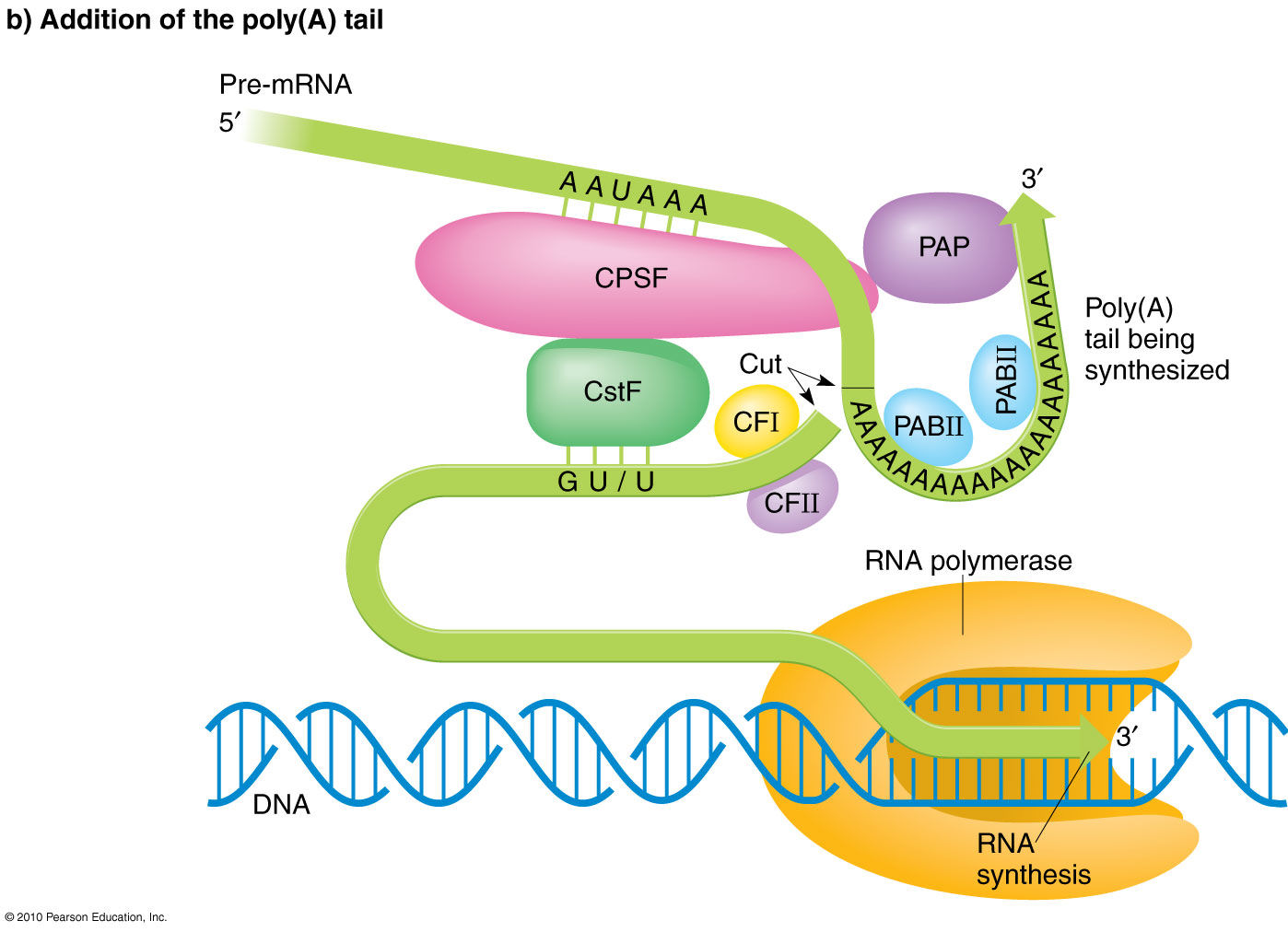
The addition of excess poly(A) RNA into an in vitro degradation system sequesters PABPC, thereby exposing the poly(A) tail on reporter RNAs and resulting in their destabilization 76.
Tales of Detailed Poly(A) Tails Trends in Cell Biology

RNA processing, such as splicing, capping, and poly-A tail addition. Messenger RNA (mRNA) translation and lifetime in the cytosol. Protein modifications, such as addition of chemical groups. In the sections below, we'll discuss some common types of gene regulation that occur after an RNA transcript has been made.
Poly(A) addition and removal are highly regulated. Determination of... Download Scientific Diagram

The addition of a poly (A) tail has been examined in a HeLa cell nuclear extract using SV40 late RNAs that end at or near the natural poly (A) site. We find that the addition of a full-length, 200-nucleotide poly (A) tail occurs in two discrete phases. In the first phase, the addition of each adenosine is dependent on the highly conserved.
PPT Lecture 13 PowerPoint Presentation, free download ID3582973
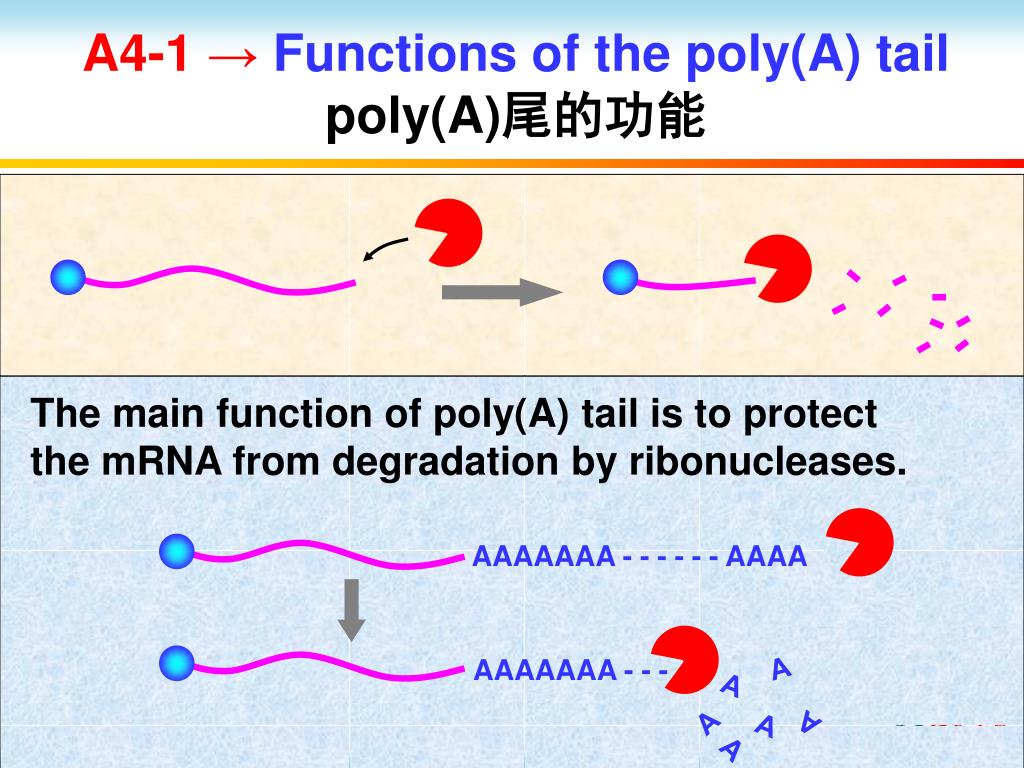
The poly-A tail is a long chain of adenine nucleotides that is added to a messenger RNA (mRNA) molecule during RNA processing to increase the stability of the molecule. Immediately after a gene in.
The tale of mRNA mixed tail EurekAlert!
The molecule that's directly made by transcription in one of your (eukaryotic) cells is called a pre-mRNA, reflecting that it needs to go through a few more steps to become an actual messenger RNA (mRNA). These are: Addition of a 5' cap to the beginning of the RNA. Addition of a poly-A tail (tail of A nucleotides) to the end of the RNA.
The Poly(A) Tail of mRNAs Cell

The addition of a poly(A) tail (that is, a chain of adenine nucleotides) to the 3′end of RNA during RNA processing is a signature of eukaryotic mRNA, and it has essential roles in regulating.
RNA stabilization by a poly(A) tail 3′end binding pocket and other modes of poly(A)RNA

The poly(A) tail contributes to both the translational status and stability of mRNAs, and it functions as a master regulator of gene expression in the cytoplasm (Figure 1).Specifically, it can act synergistically with the 7-methylguanosine cap (m7Gppp) on the 5′-end of the mRNA to stimulate translation 9.Accordingly, a transcript with a short poly(A) tail has reduced translation and is also.
PPT Typical Plasmid PowerPoint Presentation, free download ID1060241
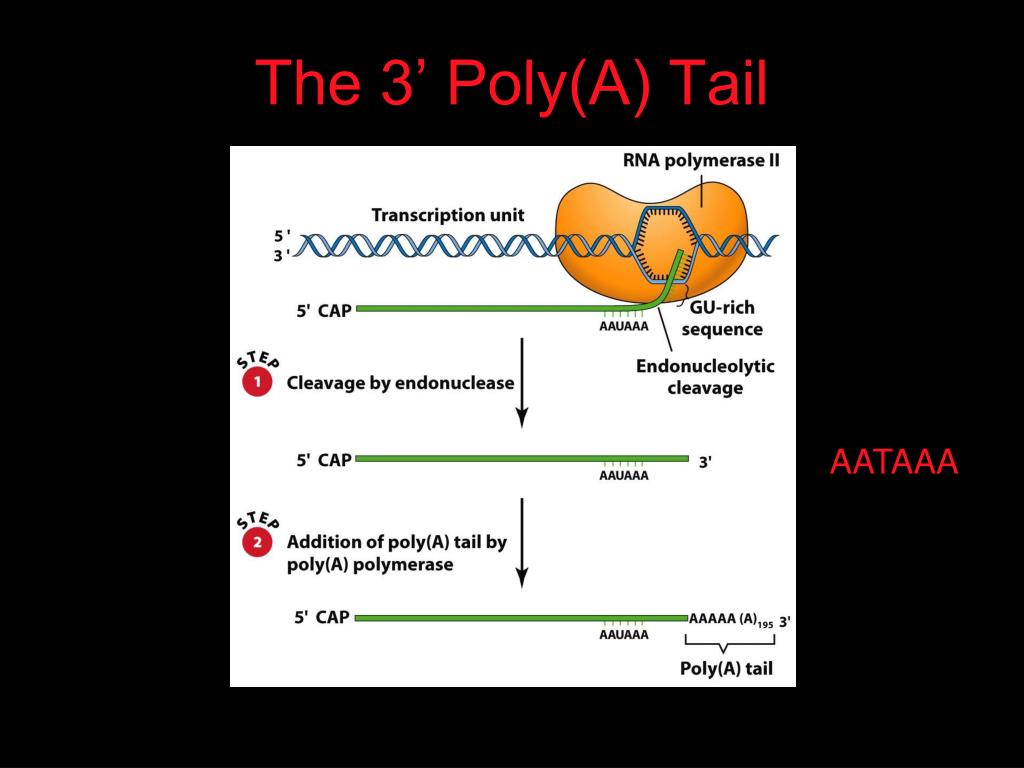
CPAC binding to the PAS, as detailed above, links the pre‐mRNA and polymerase together. This tethering of substrate and enzyme increases the rate of poly(A) tail addition but becomes progressively weaker when the poly(A) tail grows longer [51, 52, 53]. Additional contacts to the RNA sequences upstream of the PAS may be required to enhance pre.